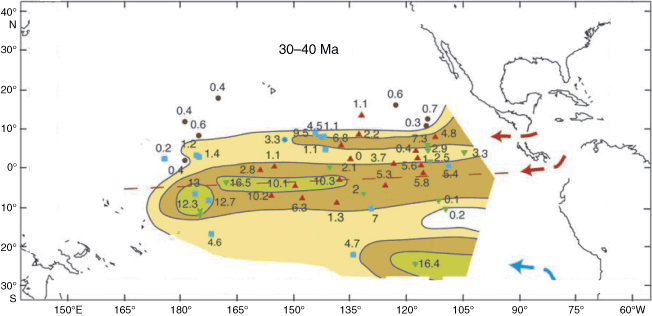
Figure F8. Average sedimentation rates in the tropical Pacific for the late Eocene time slice (m/m.y., 34–40 Ma) (after Moore et al., 2004). Sites are rotated to their estimated paleoposition at 37 Ma using a fixed-hotspot model for Pacific plate motion. Because the sediments primarily consist of tests of plankton, the sedimentation rates are a semiquantitative measure of paleoproductivity. Note that a well-organized zone of productivity exists at ~10°N in the late Eocene. Modern productivity in the region is lower and more poorly organized, as is shown in Figure F7. Blue squares = ages estimated by carbonate microfossils, green inverted triangles = ages estimated by carbonate and siliceous microfossils, red triangles = ages estimated by siliceous microfossils, brown circles = sparse microfossils or clay. The red dashed line marks the approximate center of the equatorial divergence, or geographic equator.


![]()